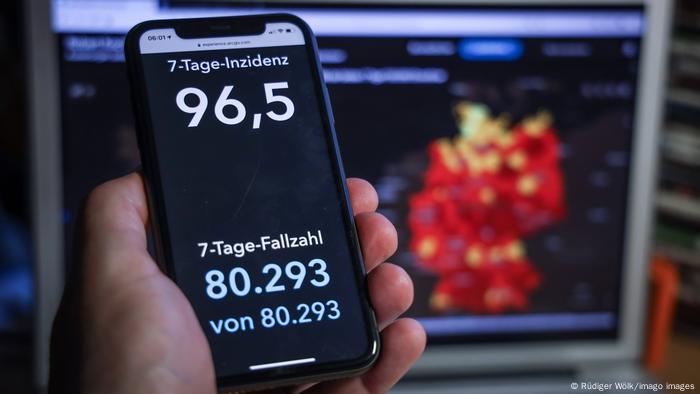There is a glimmer of hope that stands out from the many numerical models for pandemic development: Germany could fall below the important milestone of 50 new infections per 100,000 inhabitants nationwide at the end of June, “if the changes continue like this,” says pandemic researcher Dirk Brockmann in the Covid- 19 video podcast by Deutsche Welle. The physicist and his team from Berlin’s Humboldt University are also making the forecasts of the course of the pandemic for the country’s national health institute, the Robert Koch Institute (RKI), which advises the German government. The positive development is apparently driven equally by the vaccinations and the continuing contact restrictions.
After a slow start, the vaccination campaign in Germany has caught up
–
Model calculation with contact restrictions
The prerequisite is that human contacts remain restricted and that social life in Germany continues to be slowed down. “Then we expect an incidence of well below 50 at the end of June,” says Brockmann. “But these calculations always assume that everything will happen exactly as it was planned.” If a new virus variant gains ground in Germany or there are “further surprises”, the model will no longer be correct.
Brockmann’s caution has reasons: The researchers want to prevent good news from leading to people becoming more lax with their precautionary measures. He and other scientists had already warned of the second wave of infection last October and then again in January of the third wave, driven by the more contagious virus variant B117, which was first discovered in Great Britain.
On both occasions, politicians in Germany rejected a short but tough lockdown like in spring 2020. It was the basis for the country’s great success in combating Sars-CoV-2 at the beginning of the pandemic in Europe. The physicist Brockmann is a member of the interdisciplinary NoCovid group, a loose association of German experts, including virologists and epidemiologists. The “NoCovid” scientists had proposed a strategy with short but intense shutdowns to eradicate the virus. Chancellor Angela Merkel (CDU) initially persecuted them, but was unable to prevail against the prime ministers.
A new study in the British science magazine “The Lancet” proves Brockmann right with hindsight, as he said in an interview with DW: “That these strategies driven by elimination are more effective and ultimately cause much less damage, including economic damage.” Examples of this are New Zealand, Norway, Finland and other countries “that have implemented exactly this strategy, namely with the aim of not simply letting the virus run on a low flame, so to speak,” as it has been for months in Germany, “but actually exterminating it, even if this goal is not necessarily possible. ” Brockmann refers to the goal of reducing the number of road deaths as much as possible: “Nobody would say 300 road deaths a year, that’s okay, that should be our goal, but the goal is always zero, even if you do never reached. “

Many districts are happy to have less than 100 new infections
–
Great pressure for openings
There is great pressure in Germany to relax corona measures, for example to allow outdoor catering again. Health Minister Jens Spahn (CDU) warned at a press conference this week that openings must be “paired” with the willingness to “take back possible loosening”. The head of the Robert Koch Institute, Lothar Wieler, was also cautious: “We have really achieved a great deal in the last few weeks – let’s continue on this path.” For a few weeks now, the number of new infections has been falling “in all age groups and in all federal states,” said Wieler. In addition to the contact restrictions, the main reasons are the vaccinations. According to a survey by the Internet-Plattform “Our World in Data” in fourth place worldwide for vaccination speed for a few weeks now and has overtaken the USA and Great Britain
Germany is “on the right track”, said RKI boss Wieler. But he also warned: The pandemic is “not over”. “Every week in our country over 1,000 people continue to die from this infection.” Schoolchildren and young adults are now increasingly affected, where the incidences are highest. And at the same time, the youngest could not yet be vaccinated. In addition to vaccination, corona tests, keeping your distance, mouth and nose protection and ventilation in rooms to dilute aerosols are the sharpest weapons against Covid-19. “By the time we get the virus under control, the percentage of immune people in the population has to be well over 80 percent, either from a full vaccination or from having been infected and vaccinated.” So far, only a third of Germans have been vaccinated for the first time.
– .


